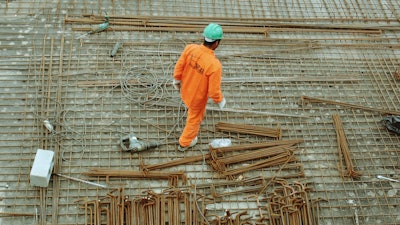
We have all felt tired and strained at work. Whether it is from lack of sleep, a demanding workload or any other contributing factor, worker sleepiness and fatigue can result in much more troublesome outcomes than yawns and seemingly never-ending workdays — especially at construction sites.
A recent study conducted by the Oregon Healthy Workforce Center surveyed construction professionals over a 12-month period. According to respondents, insomnia and lack of sleep led to:
- Cognitive lapses
- Decreased energy
- Lack of attention span
- Impaired reaction times
- Reduced memory function
- Failure to follow correct safety protocols
- Increased injuries at construction and work sites
The Difference Between Fatigue and Sleepiness
It might surprise you to know that – despite the two terms often being used interchangeably – fatigue and sleepiness differ from one another. ShareCare explains, “Sleepiness and fatigue are two distinct conditions. Sleepiness refers to the inability to stay awake even in situations in which wakefulness is required, such as at work or behind the wheel of a car. Fatigue is a state of overwhelming sustained exhaustion and decreased capacity for physical and mental work that is not relieved by rest.”
This means when we use the recognizable term “worker fatigue,” we are actually referencing sleepiness or strain from the demanding work on the job. Because it is the phrase most commonly associated with the topic, however, we will continue using it.
How to Recognize the Signs
If your employees are overly tired or fatigued, the signs will likely be clear. A few glaring indicators to watch out for include:
- Diminished work performance
- Excessive lateness or absenteeism
- Increased errors, injuries and project completion times
- Poor demeanor, “grouchiness,” frustration or quickness to anger
Tips for Reducing Fatigue and Sleepiness Among Your Workforce
If you notice the signals of a sleep-deprived, fatigued or strained employee or workforce, you’ll need to act immediately to protect your workers and your business. When an incident occurs, ask your employees about their sleep habits and energy level when writing up the report. Questions regarding how much sleep they got the previous night, during what part of the shift the accident occurred and how many hours per week they typically work can help you determine whether fatigue/sleepiness was the cause.
Not only can these symptoms cause costly injuries and accidents, they can also hurt your bottom line by extending project completion timelines and putting you over budget. Being proactive is your best bet to avoiding these problems before they begin. Create a checklist of procedures aimed at ensuring your employees are well-rested and not overworked. Your checklist should include practices such as:
- Fair shift frequencies and lengths
- Enough employees to cover workloads
- Medical care benefits to protect employee wellness
- Holidays and paid time off so workers can recuperate
- Wearable technology that monitors employee fatigue levels
- Increased supervision during busy times to monitor alertness
- At least two days off between shift switches (for example, from night-to-day or day-to-night)
This may seem like an expensive and time-consuming process, but it could save you serious money in the long run. Worker fatigue-related injuries and mistakes could cost your business immense funds by way of project budgets, workers’ compensation claims and even lawsuits. By caring for your employees’ sleep habits and energy levels now, you are working to protect your company and your livelihood.




















